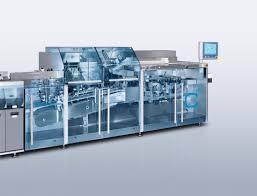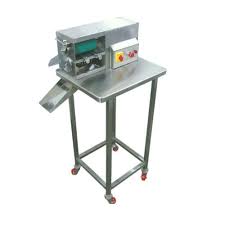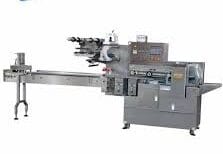|
Getting your Trinity Audio player ready... |
What is a Cartoning Machine
Cartoning Machine: Essential Overview and Comprehensive Guide to Packaging Systems
A cartoning machine, also commonly known as a cartoner, is a critical piece of equipment in the manufacturing and packaging industry, particularly within sectors such as pharmaceuticals, cosmetics, food, and beverages. These machines are designed to perform a range of tasks associated with the packaging of products into cartons. The primary function of a cartoning machine is to create cartons that are structured to stand upright, folded, closed, side-seamed, and sealed, ready for storage, distribution, or retail display.
What is a Cartoning Machine?
A cartoning machine is a piece of industrial equipment used to pack products into cartons or boxes. It forms and seals cartons, ensuring that the contents are protected and securely packaged for transport or sale. Cartoning machines are crucial in various industries, offering high efficiency and automation that speed up the packaging process, reduce labor costs, and ensure a high level of consistency and quality in packaging.
The machine typically consists of several components that work together to fold, fill, and seal cartons. These machines can be tailored to suit specific products and packaging requirements, making them highly adaptable to different manufacturing environments.
How to Select a Cartoning Machine?
Choosing the right cartoning machine for your specific needs requires careful consideration of several factors. These factors help ensure that the selected cartoner matches your production needs, budget, and the nature of your products.
- What Type of Product Requires Packaging?
The first question to ask when selecting a cartoning machine is the type of product that needs to be packaged. The physical properties of the product will directly impact the choice of the cartoning machine.
For instance, if the product is granular or free-flowing (like powder, granules, or capsules), the best approach may be to pack it vertically into the cartons. In this case, a vertical cartoning machine would be the most suitable choice, as it can handle the flow and filling of products from above.
On the other hand, if your product is solid, large, or packaged in bulk, you may need a horizontal cartoning machine, which is designed to pack products lying flat or positioned horizontally. Understanding the nature of the product is essential to making the right decision.
- What is Your Budget?
Once you have identified the product and packaging method, the next step is to determine your budget for the cartoning machine. Your financial capacity will limit the range of cartoning machines available to you.
Typically, horizontal cartoning machines are more affordable and widely available, as they offer greater flexibility for packaging different types of products. However, if your packaging needs involve specific products such as powders, capsules, or granules, you may need to invest in a vertical cartoning machine, which tends to be more expensive but better suited for the task.
- Off-line vs. On-line Packaging
Another critical factor in choosing the right cartoning machine is deciding whether you require off-line or on-line packaging.
- On-line Packaging refers to packaging products immediately after they are produced, meaning that the speed of the cartoning machine must match the production rate. For instance, if your production line produces 1,000 units per hour, the cartoner must be able to pack 1,000 units per hour as well.
- Off-line Packaging means packaging products that have already been manufactured and stored. In this case, the cartoning machine’s speed can be adjusted according to the amount of product you need to pack, and there is less urgency to match the machine’s speed with the production line.
For off-line packaging, it is essential to calculate the number of products you need to pack on a daily, weekly, or monthly basis to avoid overestimating your needs, which could lead to purchasing a more expensive and powerful machine than necessary.
Advantages of Cartoning Packaging
There are several benefits associated with cartoning packaging that make it a popular choice in various industries. Some of these advantages include:
- Protection of Products and Ease of Transport
Cartons are designed to offer strong protection for the products inside them. Their sturdy structure helps safeguard the contents from damage during transportation and handling. Additionally, because cartons have regular shapes, they can be easily stacked in containers, lorries, or other transport vessels, streamlining the distribution process.
- Environmental Friendliness
One of the most notable advantages of carton packaging is its environmental benefits. Carton packaging is highly recyclable and made from renewable resources, such as wood fiber. Unlike some packaging materials that cannot be replenished after extraction, the raw materials used for cartons can be sustainably decomposed and returned to the earth. This makes carton packaging a highly eco-friendly option compared to other packaging materials.
- Tamper-Proof
Cartons are not only designed to protect products from physical damage but also to prevent tampering or interference. Packaging that uses tamper-evident features can alert consumers and manufacturers if the product has been altered or compromised in any way, ensuring the safety and integrity of the product.
- Aesthetic Presentation
Cartons offer a significant opportunity for product branding. Custom-designed cartons can feature high-quality graphics, vibrant colors, and other visual elements that enhance the product’s presentation. This makes it easier for manufacturers to market their products effectively, increase consumer engagement, and create a memorable brand experience.
- Cost-Effectiveness and Flexibility
Carton packaging is generally more cost-effective compared to other materials like glass or plastic. Additionally, cartons are lightweight, easy to mold into various shapes, and highly customizable, making them suitable for a broad range of products.
Common Applications of Cartoning Machines
Cartoning machines are primarily used in industries that require the efficient packaging of products in cartons. Some of the most common industries that use cartoning machines include:
- Pharmaceuticals: Cartoning machines are used to package medicines, tablets, capsules, syrups, and other pharmaceutical products.
- Cosmetics: Packaging of cosmetic products such as creams, lotions, and beauty treatments.
- Food and Beverages: Cartoning machines are used to package products like bottled drinks, canned food, chocolates, and snacks.
- Confectionery: Cartoning machines can package candies, chocolates, and other confectionery items.
- Toys: Packaging of small toys, game sets, and novelty items.
- Electronics: Packaging electronic devices like mobile phones, chargers, and other accessories.
- Chemical and Tobacco Industries: Cartoning machines are also utilized for packaging chemicals, cleaning products, and tobacco goods.
Types of Boxes for Packaging
The type of box used for packaging products can significantly influence both the product’s protection and its marketability. Here are some common types of boxes used in product packaging:
- Folding Cartons: These are commonly used for consumer goods and come in various shapes, sizes, and designs.
- Rigid Boxes: Stronger than folding cartons, rigid boxes are used for luxury or high-end products.
- Corrugated Boxes: These are commonly used for shipping and bulk packaging. They are made from layers of cardboard, providing extra durability.
- Mailer Boxes: Designed for small, flat items, these boxes are optimized for shipping.
- Custom Boxes: These boxes are tailored to the specific needs of the product, ensuring a perfect fit and custom design.
Key Components of a Cartoning Machine
A cartoning machine consists of several essential components that work in unison to create efficient packaging systems. Some of the primary components of a cartoning machine include:
- Control Panel: The heart of the machine, where all settings and operations are managed.
- Electric Motors & Electric Panel: Responsible for powering the machine’s movements and operations.
- Conveyors, Guide Rails, and Rollers: These elements direct the flow of products into the carton and help move the carton through the machine.
- Pneumatic System and Tooling: Used for opening cartons and sealing them securely.
- Inkjet Printer: For printing batch numbers, barcodes, or other product information directly on the packaging.
- Lubrication System: Ensures smooth operation by reducing friction between moving parts.
- Safety Systems: Critical for protecting operators and preventing accidents.
Industries that Use Cartoning Machines
Cartoning machines are used in a variety of industries to streamline the packaging process. Industries that rely on cartoning machines include:
- Food & Beverages
- Pharmaceuticals & Cosmetics
- Tobacco
- Electronics
- Chemical Products
- Textiles
- Sports Equipment
Limitations of Cartoning Machines
Despite their advantages, there are some potential drawbacks to cartoning machines. These include:
- High Initial Setup Costs: The cost of purchasing and setting up a cartoning machine can be expensive, particularly for smaller manufacturers.
- Increased Operational Costs: Additional personnel may be required to operate the machine, increasing overall production costs.
- Size and Lack of Mobility: Once installed, cartoning machines are heavy and not easily moved or reconfigured.
Integration with Other Packaging Equipment
Many modern cartoning machines are designed to integrate seamlessly with other types of packaging equipment, creating a cohesive and streamlined production process. This integration allows manufacturers to automate the packaging process from start to finish, reducing labor costs and increasing overall efficiency.
Semi-Automatic vs. Fully Automatic Cartoning Machines
There are two primary types of cartoning machines: semi-automatic and fully automatic machines.
- Semi-Automatic Cartoning Machines: These machines require some human intervention, such as manually inserting products into the machine. They are generally slower and require more labor.
- Fully Automatic Cartoning Machines: These machines operate with minimal human intervention and can perform tasks such as folding, sealing, and printing automatically, significantly increasing production speed.
A Comparison of Horizontal and Vertical Cartoning Machines: Functions, Features, and Customization
Cartoning machines are essential equipment used in the packaging industry to pack products into cartons. These machines are classified into two main categories: vertical cartoning machines and horizontal cartoning machines. The difference between the two lies primarily in how the product and cartons are oriented within the machine during the packaging process. Both types of cartoning machines serve distinct purposes and come with specific advantages depending on the type of product being packaged, the speed required, and the automation level desired.
This article will dive into the different features, functions, and customization options of both vertical and horizontal cartoning machines, as well as explore various aspects of high-speed and multi-functional cartoning systems.
- Vertical Cartoning Machines
Vertical cartoning machines are designed to pack products by feeding the carton into the machine in a vertical orientation. In this setup, the product is typically loaded either manually or automatically from the top of the machine. These machines are ideal for packing “bare” products, which are usually loose or unboxed items that can be moved by gravity, often packed by weight or volume. Examples of products that are well-suited for vertical cartoning machines include dry pasta, rice, cereal, and other similarly loose or lightweight items.
Key Features of Vertical Cartoning Machines:
- Gravity Assistance: The vertical positioning allows gravity to assist in the movement of products into the carton, reducing the need for complex conveyors or manual assistance.
- Ideal for Light or Loose Products: Vertical cartoners are ideal for products that do not require much support and can freely fall into the carton.
- Simple to Operate: These machines are typically simpler in operation and require minimal adjustments.
Vertical cartoning machines are an excellent choice for packaging small, loose products in a more automated fashion, with minimal reliance on manual labor. However, they might not be suitable for more complex or fragile products that require more controlled handling.
- Horizontal Cartoning Machines
Horizontal cartoning machines, as the name suggests, pack products from the side of the carton. In contrast to vertical cartoners, these machines feed the products horizontally into the cartons, which can be done automatically. Horizontal cartoning systems can run in either intermittent or continuous mode, depending on the level of automation and the packaging requirements.
Key Features of Horizontal Cartoning Machines:
- Versatility in Product Handling: Horizontal cartoning machines are often used for a wider range of products, including food items like cereals, vacuum-packed coffee, rice, and baked goods like cakes and pizzas.
- Intermittent or Continuous Operation: Horizontal machines can be set to work either intermittently or continuously, making them suitable for different production speeds and product types.
- Automatic Filling and Sealing: These machines can automatically fill the cartons with products from the side and seal the ends, either through flap insertion or hot-melt glue application.
Horizontal cartoning machines are preferred for packaging a wide variety of items that need to be loaded and sealed in a precise and consistent manner, particularly where the items may require more controlled handling.
- High-Speed Automatic Cartoning Machines
High-speed automatic cartoning machines are designed to handle large volumes of products at a rapid pace. These machines are capable of packing up to 370 boxes per minute, offering a highly efficient and automated solution for industries that require high output.
Key Features of High-Speed Automatic Cartoning Machines:
- High-Speed Operation: Capable of packing up to 370 boxes per minute, these machines are ideal for high-volume packaging applications.
- Mechanical-Electrical Integration: These machines are engineered with a blend of mechanical and electrical systems, ensuring efficient and reliable performance.
- Automatic Functions: The machine can automatically open the carton, pack products, insert leaflets, emboss batch numbers, and seal the carton. This reduces the need for manual intervention.
- Advanced Control Systems: It uses advanced control systems like PLC (Programmable Logic Controller) to manage operations, a Human-Machine Interface (HMI) for ease of operation, and photoelectric sensors for precision control at each station.
- Versatile Integration: High-speed automatic cartoning machines can work independently or be integrated into a full production line, allowing for more flexible production workflows.
- Hot-Melt Glue Sealing: These machines also offer the capability to seal cartons with hot melt glue, ensuring that packages are securely sealed.
- Multi-Functional Cartoning Machines
Multi-functional cartoning machines are designed to meet the needs of varied production lines. These machines are capable of performing a range of tasks, from feeding materials into cartons to printing batch numbers and sealing the cartons efficiently.
Key Features of Multi-Functional Cartoning Machines:
- Automated Feeding: The machine automatically feeds materials, opens cartons, inserts products, and seals the cartons. It can even reject waste products, ensuring smooth and efficient operation.
- Compact and Simple Design: The machine features a compact and easy-to-operate design, allowing for quick setup and adjustments.
- Advanced Controls: Equipped with a PLC system, servo motors, and touch screen control panels, multi-functional cartoners offer intuitive operation and easy adjustment.
- Flexible Packaging Options: These machines support a wide range of packaging types and sizes, allowing for quick adjustments between different product specifications.
- Waste Reduction: The automatic sensing and tracking system ensures that empty packs are not fed into the machine, minimizing waste.
- Customization and Integration: Multi-functional cartoning machines can be integrated with other machines to form a complete production line, and they support various automatic feeders based on the product being packaged.
- Hand-Load Cartoners
Hand-load cartoning machines are a simpler type of cartoning system, often used when automation is not required or when the products being packaged are too delicate for automated systems. In a hand-load cartoning system, one side of the carton is sealed, and the operator manually loads the product through the open side of the carton. Once the products are loaded, the machine automatically seals the top and discharges the finished carton.
Key Features of Hand-Load Cartoners:
- Manual Loading: Operators manually load products into the carton, making these systems ideal for smaller production lines or fragile products.
- Sealing Function: After loading, the machine automatically seals the carton to complete the packaging process.
- Tamper-Evident Cartoning Machines
Tamper-evident cartoning machines are designed with additional security features to ensure that the packaged products remain intact and have not been tampered with. The unique way these machines seal cartons helps to indicate whether any tampering has occurred, making them suitable for industries where security and consumer confidence are paramount.
Key Features of Tamper-Evident Cartoning Machines:
- Specialized Sealing: The sealing process ensures that the cartons can only be opened in a specific way, making it clear if the packaging has been tampered with.
- Enhanced Product Security: These machines are ideal for products that require a higher level of security, such as pharmaceuticals or high-value items.
- Customization and Printing Capabilities
Many modern cartoning machines offer customization options based on the specific requirements of the products being packaged. These machines can be tailored to handle various carton sizes, types, and configurations. Additionally, some cartoning machines include printing capabilities, allowing for high-quality printing of batch numbers, expiry dates, or other product information either before or after the packaging process.
Custom Features and Printing Options:
- Custom Designs: Cartoning machines can be customized based on product specifications, such as size, weight, or shape.
- Printing Capabilities: Some machines have printing functions that enable the printing of high-resolution codes, graphics, and text on the packaging material. This can be done either before or after the packaging process.
- Modifying Carton Specifications
When changing the specifications of the carton, adjustments need to be made to the cartoning machine’s setup to accommodate different dimensions. These adjustments typically involve modifying the carton conveyor belt, adjusting the carton storeroom, and ensuring the correct positioning of the vacuum suction system. It is essential to follow the correct procedures when modifying carton specifications to ensure accurate and efficient packaging.
- Troubleshooting Common Cartoning Machine Issues
Despite their advanced technology, cartoning machines may encounter issues during operation. Common problems include poor machine stability at high speeds, air blockage in the sucker tubing, inseparable carton blanks, and incorrect modification of the carton storeroom. The key to troubleshooting is quick identification and resolution, which can often be done through sensor-based alerts or manual adjustments.
Common Issues and Solutions:
- Air Blockage: Clear the sucker tubing and replace any faulty tubing to ensure smooth operation.
- Carton Magazine Issues: Utilize photoelectric sensors to identify faults in the magazine and prevent further issues.
- Vacuum Suction Issues: Overhaul or reposition the vacuum suction system to ensure it is correctly aligned.
Conclusion
Vertical and horizontal cartoning machines serve different purposes, and the choice between them depends on factors like the type of product, desired packaging speed, and automation level. High-speed automatic cartoning machines and multi-functional cartoners offer flexibility and efficiency for larger production lines, while hand-load cartoners and tamper-evident machines cater to more specific needs. Whether you’re looking for a high-speed solution or a customized, tamper-proof system, there is a wide range of cartoning machines to meet various production requirements.
Conclusion: The Future of Cartoning Machines
Cartoning machines are integral to the modern packaging process, ensuring products are safely and efficiently packed. By considering factors such as the type of product, budget, and production speed, manufacturers can select the right machine for their needs. With continued advancements in automation and efficiency, the role of cartoning machines will only continue to grow, driving further improvements in packaging and production systems across multiple industries















